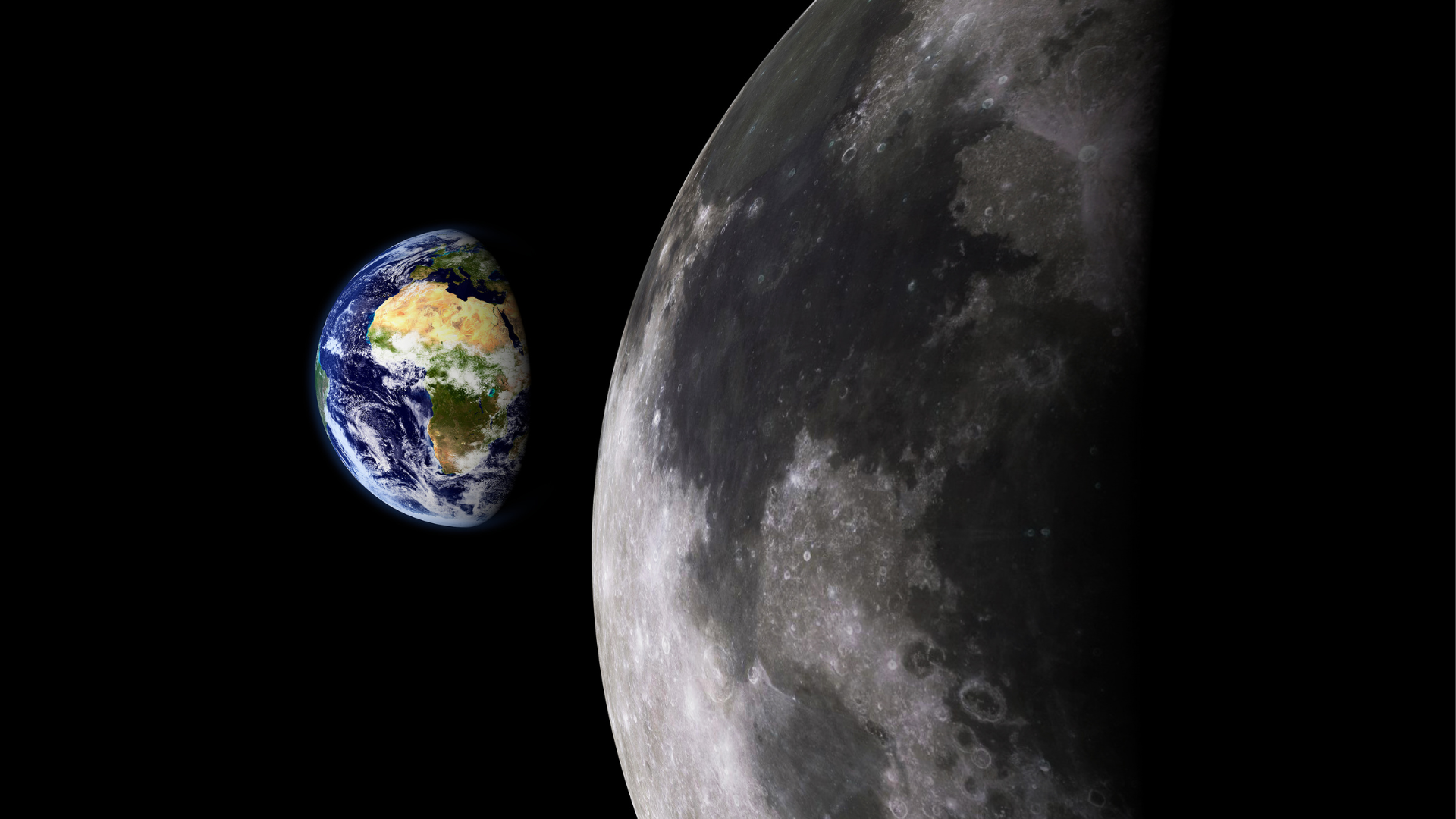

Dr Josua Pena
Space & Connectivity
Lunar missions are becoming increasingly complex and sophisticated, driving the need for higher-bandwidth communications. One way to meet this need is through higher frequencies, such as the Ka band or optical frequencies. However, the use of radio frequencies needs to be carefully coordinated as different actors have to share the frequencies and physical space to operate simultaneously.
The International Telecommunication Union (ITU) is responsible for coordinating the global use of radio spectrum, and a future World Radiocommunication Conference (WRC) will likely address the use of radio spectrum for lunar missions. In this article, a succinct recompilation of the most remarkable lunar missions is presented, along with comments about future possible changes in the regulatory framework of frequency sharing in lunar communications.
The first human-made object to touch the Moon was the Soviet Union’s Luna 2 on 13 September 1959. The first crewed lunar landing was Apollo 11 on 20 July 1969, when astronauts Neil Armstrong and Buzz Aldrin became the first humans to walk on the lunar surface. To undertake such landings, complex communications systems are required to transmit data and voices between the spacecraft and Earth, with radiofrequency transmission being the most used technique for both manned and unmanned missions. Since the 1950s, several missions have been carried out, mainly by Russia, the US, China, and India.
The Russian Luna 9 spacecraft[1] was a spherical lander with a diameter of 0.6 meters. It was equipped with four legs that cushioned its landing on the Moon. The spacecraft carried several scientific instruments, including a television camera, a seismometer, and a magnetometer. Luna 9 used a vital VHF radio system for communication with Earth, whose uplink frequency was 19.992 MHz and downlink frequency was 19.092 MHz. The spacecraft landed on the Ocean of Storms, a large mare located on the western side of the Moon. After landing, Luna 9 transmitted panoramic images of the lunar surface back to Earth. The spacecraft also collected data on the Moon’s magnetic field and seismic activity.
The American space programme was the first and only one that successfully landed manned spacecraft on the Moon. Due to the revolutionary nature of the mission, the communication system played a key role in its success and safety.
The system used a Unified S-band configuration that enabled simultaneous transmission of voices, telemetry data, and television signals. The downlink (spacecraft-to-Earth) used 2,276.5 MHz and the uplink (Earth-to-Spacecraft) used 2,119 MHz, both having subcarriers at 1.25 MHz (NBFM voice) and 1.024 MHz (telemetry data). The lunar module deployed a television camera to transmit signals to Earth, a solar wind composition experiment, a seismic experiment package, and a Laser Ranging Retroreflector, as well as gathering samples of the lunar surface.
The Chinese lunar exploration performed several unmanned missions, including satellites orbiting the Moon and rover landings. The most recent successful landing was with the Chang’e 5 mission, which landed on the Moon on 1 December 2020 after a six-day journey. The ship was a robotic lander that collected samples of lunar soil and returned them to Earth for the first time since 1976.
The spacecraft used the S, X, and Ka bands; specifically, 2,025-2,120 MHz, 7,145-7,235 MHz, and 34.2-34.7 GHz on the downlink and 2,200-2,300 MHz, 8,400-8,500 MHz, and 31.8-32.3 MHz on the uplink.[2] After landing, Chang’e 5 collected about 1.7 kilograms of lunar soil and rock samples and returned to Earth on 16 December 2020. It was the first Chinese spacecraft to land on the Moon.
More recently, the Russian Space Agency, Roscosmos, launched Luna 25, an automatic landing interplanetary station to study the upper layer of the surface around the south pole of the Moon and the lunar exosphere and develop landing technologies and soil analysis.[3] The spacecraft was launched on 8 August 2023 and successfully placed into orbit as an artificial lunar satellite.
However, on 19 August, during the operation to transfer to the pre-landing orbit, an emergency occurred that did not allow the manoeuvre to be performed with the specified parameters. According to the results of the preliminary analysis, due to the deviation of the actual pulse parameters from the calculated ones, the automatic station switched to an off-design orbit and collided with the surface of the Moon. The communication system for this mission used the frequency bands 7,145-7,235 MHz and 8,400-8,500 MHz.[4]
Furthermore, the Indian Space Agency recently performed an unmanned lunar landing with the Chandrayaan-3 mission, which landed close to the South Pole of the Moon on 23 August 2023.[5] The spacecraft was composed of a robotic lander and rover designed to test thermal conductivity, temperature, and chemical composition to infer the mineralogical composition of the lunar surface.
Additionally, the probes measured lunar seismic activity, near-surface plasma density over time, and the elemental composition of lunar soil and rocks around the lunar landing site. These measurements were carried out during a lunar day as the design did not contemplate protection against the lower temperatures during the lunar nighttime. Connection was lost on 3 September 2023. This mission used mainly the S band (2,200 MHz) and X band (8,500 MHz) to maintain connectivity with the orbiter and the Earth station.[6]
In addition to RF links for lunar missions, laser (optical) links have emerged as a promising technology for satellite services, offering several advantages and certain challenges over traditional radio communication methods. One of the key benefits of laser links is their significantly higher bandwidth, enabling the transmission of vast amounts of data at much faster speeds, particularly for inter-satellite data transfer.
Another advantage of laser links is their inherent security as narrow beams of laser light make them difficult to intercept or jam, ensuring the confidentiality and integrity of transmitted data. However, laser links face certain drawbacks that limit their use, such as the sensitivity of laser beams to atmospheric conditions like clouds, fog, and precipitation, as well as the complexity of alignment and tracking of laser beams between satellites that require precise pointing mechanisms.[7] Specifically, for intersatellite communications between lunar orbit and Earth orbit, this kind of link is useful to relay large amounts of information from the lunar surface and an earth station.
In 2022, the Interagency Operations Advisory Group[8] published a report on The Future
Lunar Communications Architecture.[9] It presented some technical provisions related to lunar exploration based on real data from different missions already in progress and others that were planned at the time. The group defined five different types of links for communication to and on the Moon, as well as the frequencies that are likely to be used: Earth-to-Moon, Moon-to-Earth, Cross Link, Proximity Link, and Lunar Surface to Lunar Surface. The definition of such parameters and the values associated with them are listed in Table 1 below:


Considering the study cases presented previously and the estimations from IAOG, it is noticeable that the UHF, S, X, K, and Ka bands and the optical 1,550 nm band might be commonly used in lunar-related communications. To establish priorities and fair access to those frequencies, the International Telecommunication Union (ITU) is responsible for mediating the global use of radio spectrum and a future World Radiocommunication Conferences (WRC) will likely address the use of radio spectrum for lunar missions. Such an idea held the attention of different administrations during the Working Party (WP) 4A on the Working Groups (WG) 7B and 7D meetings, suggesting the necessity of creating new agenda items for the next WRCs. Additionally, several companies have filed requests for spectrum access on the Moon for future missions, meaning the most likely scenario is the creation of new agenda items for upcoming WRCs.
The future of lunar communications looks bright, with new technologies such as laser links offering the potential for significantly higher bandwidth and more secure communications. However, the increasing number of lunar missions and the growing demand for frequency spectrum will require careful coordination and regulation to ensure that all users have fair access. The ITU is likely to play a key role in this process, and future World Radiocommunication Conferences are expected to address the use of radio spectrum for lunar missions.
In addition to the technical challenges, legal and regulatory issues also need to be addressed regarding the allocation of the frequency spectrum on the Moon and the operation of different countries and organisations sharing that spectrum.
Despite these challenges, the future of lunar communications is promising. With new technologies and careful planning, it is possible to ensure that lunar explorers have the communication capabilities they need to succeed.




